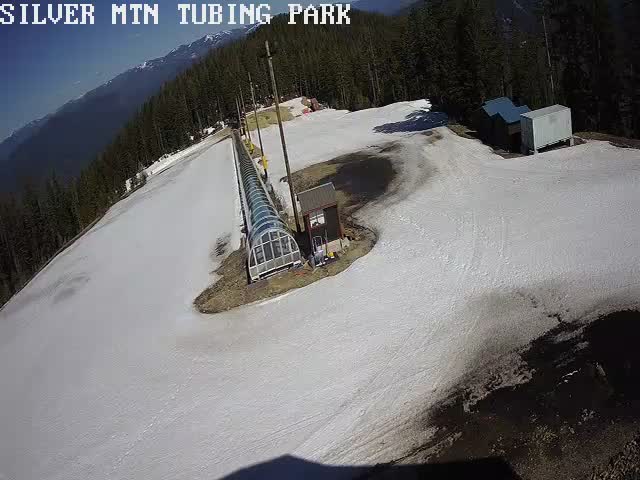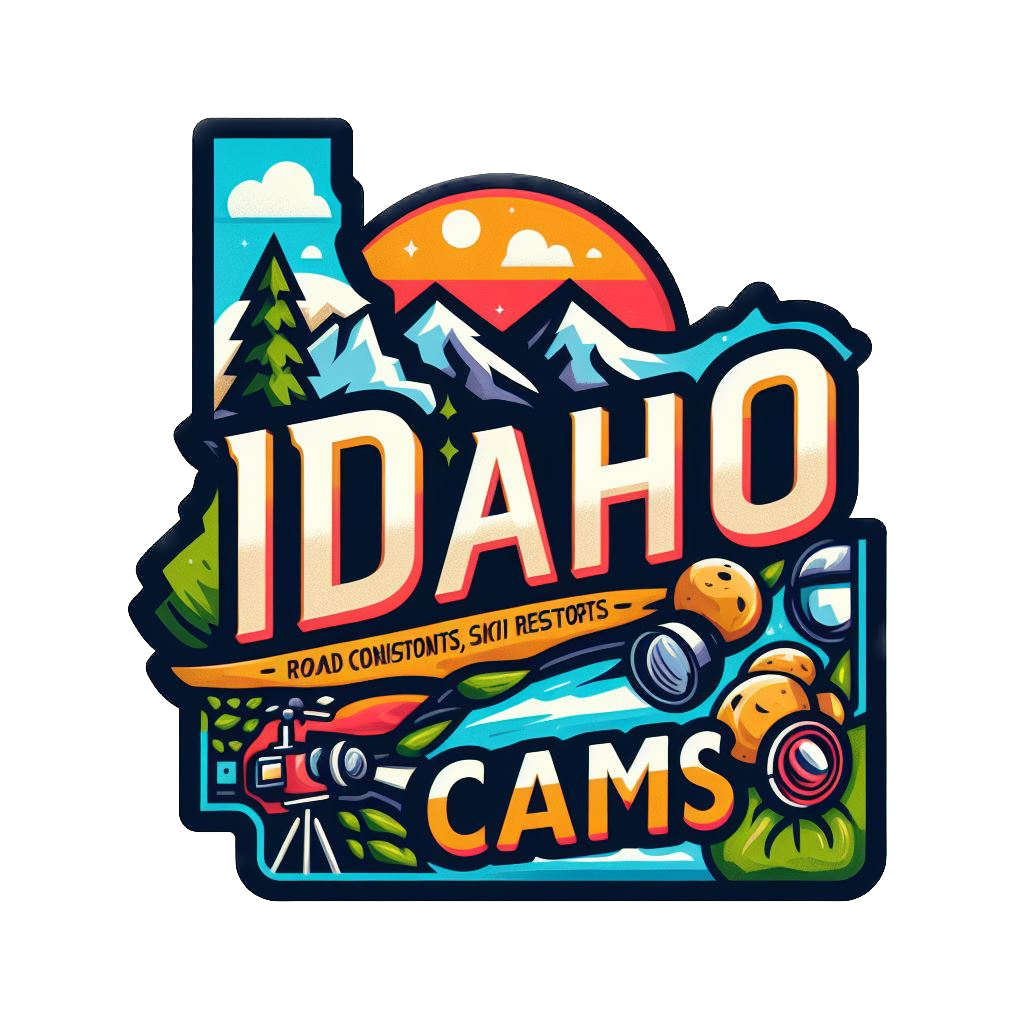Silver Mountain, ID Weather Cams
Silver Mountain, ID Weather Cams
Silver Mountain Resort Cam
Silver Mountain, ID Weather Cams
Mountain House Cam

Kellogg Snow Stake Cam

Kellogg Peak Cam

Snow Tubing Cam

Silver Mountain Resort: A Historical Gem in Idaho’s Panhandle
Silver Mountain, ID Weather Cams. Nestled in the Silver Valley of northern Idaho, Silver Mountain Resort boasts a rich history intertwined with the region’s mining heritage. Originally known as Jackass Ski Bowl, the resort debuted in 1968 on Wardner Peak. Back then, it catered to a smaller, local crowd of skiers.
Early Beginnings: The Discovery of Silver
Silver Mountain, Idaho, originally known as “Silver King,” owes its origins to the discovery of silver in the late 19th century. In 1886, a group of prospectors, driven by tales of riches, stumbled upon a rich vein of silver ore in the rugged Coeur d’Alene Mountains. This discovery set off a rush that transformed the area almost overnight. Hundreds of miners, along with entrepreneurs hoping to profit from their needs, flocked to the region. A bustling mining town quickly sprang up around the silver mines.
By the early 1890s, Silver Mountain had established itself as one of the most productive silver mining areas in the United States. The initial boom was characterized by a wild influx of people and capital, leading to rapid development. Several mines were opened, and a complex system of tunnels and shafts was constructed to extract the precious metal. The silver extracted during this period contributed significantly to Idaho’s economy, cementing its place in the state’s mining history.
The Boom Years: Prosperity and Growth
The boom years of Silver Mountain brought unprecedented prosperity to the region. During the 1890s and early 1900s, the population of the mining town swelled as more people arrived seeking fortune and opportunity. Businesses flourished, and the local economy diversified to include services catering to miners and their families. Hotels, saloons, and general stores lined the bustling streets, reflecting the town’s rapid growth and vibrant community life.
Investment in infrastructure was significant during this period. Railroads were extended to connect Silver Mountain with larger cities, facilitating the transport of silver ore and other goods. This development not only boosted the mining industry but also made the area more accessible. Schools, churches, and other civic buildings were constructed, providing essential services to residents and enhancing the quality of life.
However, the prosperity of Silver Mountain was not without challenges. The mining industry was fraught with dangers, and accidents were common. Additionally, the boom years saw frequent labor disputes as miners demanded better wages and working conditions. Despite these issues, the period remains one of the most dynamic and influential in the town’s history.
Decline and Transition: The End of an Era
The decline of Silver Mountain began in the 1920s as the rich veins of silver started to dwindle. Mining operations became less profitable, and many miners left in search of work elsewhere. The Great Depression of the 1930s further exacerbated the situation, leading to widespread economic hardship. By the mid-20th century, most of the mines had closed, and the once-thriving town faced a period of decline.
As mining activity decreased, Silver Mountain had to adapt to survive. The community shifted its focus to other industries, including logging and agriculture. This transition was difficult, and many families moved away, seeking better opportunities. The population dwindled, and many of the bustling businesses closed their doors. The infrastructure, built during the boom years, fell into disrepair, symbolizing the end of an era for Silver Mountain.
Despite the challenges, the spirit of the community remained resilient. Efforts were made to preserve the town’s heritage and history, with some of the old mining buildings being repurposed or maintained as historical landmarks. These preservation efforts laid the groundwork for a future revitalization based on Silver Mountain’s rich historical legacy.
Revival and Reinvention: The Birth of a Ski Resort
In the latter half of the 20th century, Silver Mountain found a new lease on life through tourism and recreation. The picturesque landscape, once a backdrop for mining operations, became the focal point for a new industry: skiing. In 1968, the Silver Mountain Ski Resort was established, capitalizing on the area’s natural beauty and favorable conditions for winter sports.
The ski resort brought renewed economic activity and visitors to the region. Modern facilities, including ski lifts and lodges, were constructed to accommodate the influx of tourists. Silver Mountain became a popular destination for skiing, snowboarding, and other winter activities, attracting visitors from across the country. The resort also offered summer activities such as mountain biking and hiking, making it a year-round attraction.
This reinvention breathed new life into the local economy and provided employment opportunities for residents. The transformation from a mining town to a tourist destination demonstrated the community’s ability to adapt and thrive in changing circumstances. The resort’s success has helped preserve the town’s historical buildings and heritage, blending the old with the new.
Present Day: A Blend of History and Modernity
Today, Silver Mountain, Idaho, stands as a unique blend of historical legacy and modern recreation. The town and the surrounding area have embraced their dual identity as a former mining powerhouse and a premier ski destination. Historical sites and museums offer visitors a glimpse into the past, showcasing the rich heritage of the mining era. Guided tours of the old mines and historical buildings provide educational experiences that highlight the town’s significant contributions to Idaho’s development.
The Silver Mountain Ski Resort continues to be a major attraction, drawing thousands of visitors each year. The resort has expanded its offerings to include a water park, golf course, and extensive trail systems for outdoor enthusiasts. These amenities have helped to create a vibrant, year-round economy that supports local businesses and services.
Community events and festivals celebrate both the mining history and the contemporary recreational lifestyle. Events such as the annual Silver Mountain Blues Festival and historical reenactments draw crowds and foster a sense of pride and continuity among residents. The town’s schools, churches, and civic organizations remain active, contributing to a strong and cohesive community spirit.
Looking Forward: Challenges and Opportunities
As Silver Mountain moves forward, it faces both challenges and opportunities. The town must balance the preservation of its historical sites with the need for modern infrastructure and amenities to support tourism. Environmental concerns, particularly related to the impact of recreational activities on the natural landscape, require careful management to ensure sustainable growth.
Efforts to diversify the local economy continue, with initiatives aimed at promoting year-round tourism and attracting new businesses. The potential for further development in eco-tourism and outdoor adventures offers promising avenues for growth. Additionally, the community’s commitment to preserving its historical heritage ensures that the legacy of the mining era will not be forgotten.
Silver Mountain’s ability to reinvent itself while honoring its past serves as an inspiring example of resilience and adaptability. The town’s rich history and vibrant present provide a strong foundation for future success, making it a unique and cherished destination in Idaho.
In conclusion, the history of Silver Mountain, Idaho, is a testament to the enduring spirit of its community. From its early days as a bustling mining town to its current status as a premier recreational destination, Silver Mountain has continually evolved, embracing change while preserving its rich heritage. This dynamic blend of history and modernity ensures that Silver Mountain remains a beloved and vibrant part of Idaho’s cultural landscape.
For more information, visit the official Silver Mountain Resort, ID website.
Silver Mountain, ID Weather Cams
See more Idaho Ski Resorts here.
